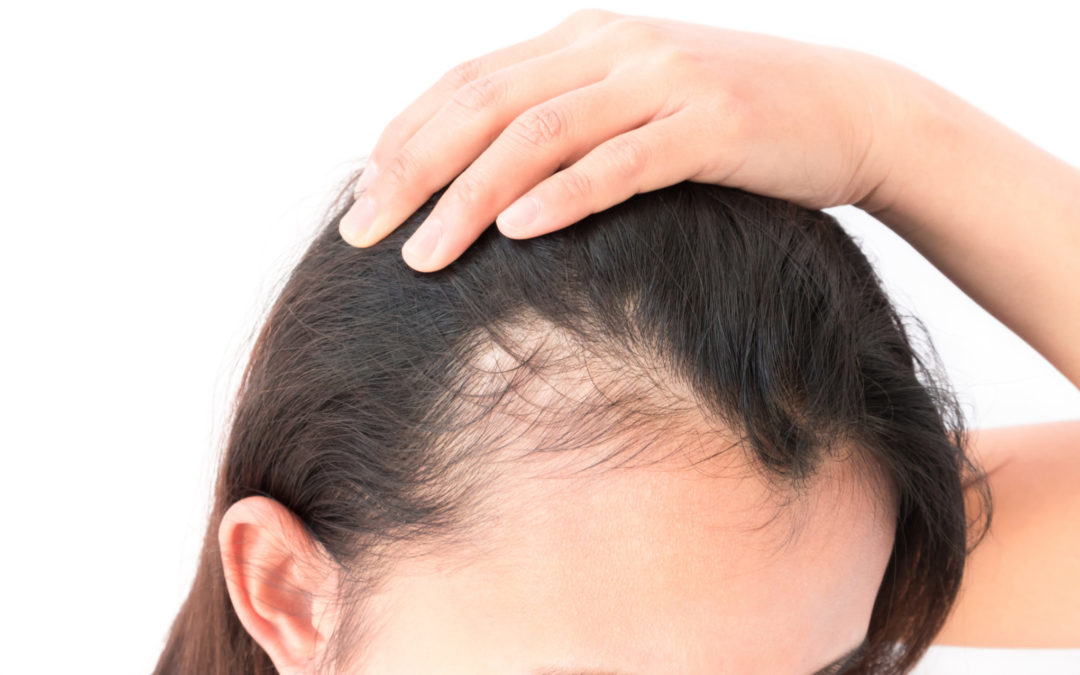Hyperparathyroidism (HPT) can cause hair loss, among other symptoms. To understand why hair loss can occur in combination with HPT, let’s examine the topic in detail.
What Is the Link Between Parathyroid Disease and Hair Loss?
Studies show hair loss in HPT patients is rare; but, there is a “significant prevalence” of hair loss in patients dealing with hypothyroidism. In one study of 25 patients diagnosed with hypothyroidism, researchers found hair symptoms were present in 68% of patients. Researchers also noted that these symptoms impacted patients’ quality of life. Comparatively, a study of 21 patients diagnosed with hypoparathyroidism revealed 62% of patients reported axillary hair loss, 52% reported loss of pubic hair, and 48% reported coarsening of body hair.
Other research shows parathyroid hormone (PTH) may impact hair follicle growth. PTH regulates calcium in the body, and an HPT patient may be dealing with an overactive parathyroid gland that produces too much PTH. However, the role of PTH and an abnormal parathyroid gland in hair growth remains unclear and continues to be studied.
Thinning hair is also a symptom of HPT. Conversely, outside of thinning hair, other HPT symptoms can occur.
What Causes Hair Loss in HPT Patients?
In HPT patients, patchy hair loss may be attributed to low calcium levels. HPT patients may experience a vitamin D deficiency, which can make it increasingly difficult for the body to absorb calcium properly. Vitamin D is an important vitamin that plays a role in normal functioning of many systems. They can also experience other physical symptoms, either in combination with hair loss or on their own. Along with the direct effect of calcium and PTH, there is also an indirect effect based the increased anxiety caused by hyperparathyroidism. High anxiety states can cause hair loss also.
Along with hair loss, HPT patients may experience symptoms that range from mild to severe, and these symptoms include osteoporosis, abdominal pain, and fatigue. These symptoms indicate one or more of the parathyroid glands may be defective — and should be addressed immediately. Otherwise, the symptoms can linger, and they may continually worsen for many months or years after onset.
What to Do If Hair Loss Occurs
If hair loss occurs, meet with a dermatologist. At this time, a dermatologist can evaluate a patient and find out why hair loss is happening. The dermatologist can also discuss different hair loss treatment options designed to correct the issue and prevent it from recurring.
For patients who experience hair loss in combination with other HPT symptoms, meet with a doctor. These patients can then undergo blood tests to evaluate the calcium and PTH levels. They may also undergo a 24-hour urine collection to assess waste products removed by the kidneys and/or a bone density test to determine any bone loss.
When a patient is diagnosed with HPT, multiple treatment options may be considered. If hair loss and other HPT symptoms impact a patient’s quality of life, parathyroid gland surgery may be necessary. The procedure is minimally invasive, and it involves the removal of one or more defective parathyroid glands.
Localization studies are performed before parathyroid surgery. They are used to determine the location of any malfunctioning parathyroid glands. That way, HPT patients can find out if they have one abnormal parathyroid gland or one or more parathyroid adenomas, or if all four parathyroid glands are defective or parathyroid hyperplasia is present.
During parathyroid surgery, a minor incision is made into a patient’s neck. Next, any defective parathyroid glands are removed.
After a parathyroid surgery, a 4 gland assessment is performed to determine if the treatment was successful. A parathyroid surgeon uses the assessment to find out if a patient’s parathyroid glands are functioning properly. At the same time, the surgeon verifies that all defective parathyroid glands were safely removed.
Along with a 4 gland assessment, a parathyroid surgeon provides post-treatment instructions to HPT patients. The surgeon requests an HPT patient return for a follow-up appointment approximately one week after surgery; in the meantime, the patient may be required to limit their activity and take medication to alleviate post-surgery pain.
HPT patients should watch for muscle cramps, severe headaches, and other symptoms of hypocalcemia after parathyroid surgery as well. A parathyroid surgeon gives HPT patients instructions to help manage their calcium and vitamin D levels following surgery. But, if hypocalcemia symptoms appear within one to three days of parathyroid surgery, these patients should notify their surgeon.
Are You Dealing with a Parathyroid Tumor and Hair Loss? Explore Treatment Options
Hair loss is not always related to HPT, but there are times when this symptom occurs in conjunction with parathyroid disease. If people experience hair loss and other HPT symptoms simultaneously, a meeting with Dr. Babak Larian of the CENTER for Advanced Parathyroid Surgery can be beneficial.
Dr. Larian is an expert parathyroid surgeon, and he is committed to helping patients treat their HPT symptoms. He offers a minimally invasive parathyroidectomy (MIP) to address hair loss and other HPT symptoms.
An MIP can be performed on HPT patients under local anesthetic in approximately 20 minutes, and patients can typically return home within about one hour of treatment. When performed by Dr. Larian and the CENTER staff, an MIP has a cure rate of 97%. Comparatively, a standard parathyroidectomy’s cure rate generally falls between 93-95%.
Dr. Larian is available to discuss parathyroid surgery and determine if HPT patients are eligible for an MIP. To learn more or schedule a free phone or video consultation with Dr. Larian, please contact us online or call us today at 310-461-0300.










